Jan 01, 2025
Factory Automation Trends for 2025
By 2025, factory automation will enter a new era driven by emerging technologies like 5G, AI/ML, and edge computing. These advancements promise enhanced connectivity, real-time decision-making, and smarter operations.
![[object Object]](https://admin.industrialautomationindia.in/storage/cover_stories/coverstory-XMv5zev9wvAThx93AdwwSREFmDUqp3MIyaYkAnq4.jpg)
A convergence of emerging trends will create a more connected, intelligent, and responsive manufacturing ecosystem in 2025.
What big advances in factory automation can one expect in 2025? Increased integration of IIoT with Artificial Intelligence (AI) and Machine Learning (ML) is already happening. Sustainability and Circular Economy are the burning issues facing not just industry but every aspect of human life. Smart factories are still a work in progress but new terms like Dispersed Manufacturing to de-risk supply chain concerns of Covid era are leading to trends like On-Demand Manufacturing and Purposeful Production. Industrial Metaverse will be playing an increasing role in monitoring every move on the shop floor as Autonomous Operations become commonplace. Predictive Maintenance will become an even more critical part of this emerging ecosystem. So what are the new technologies in automation that will be game-changers for factories in 2025?
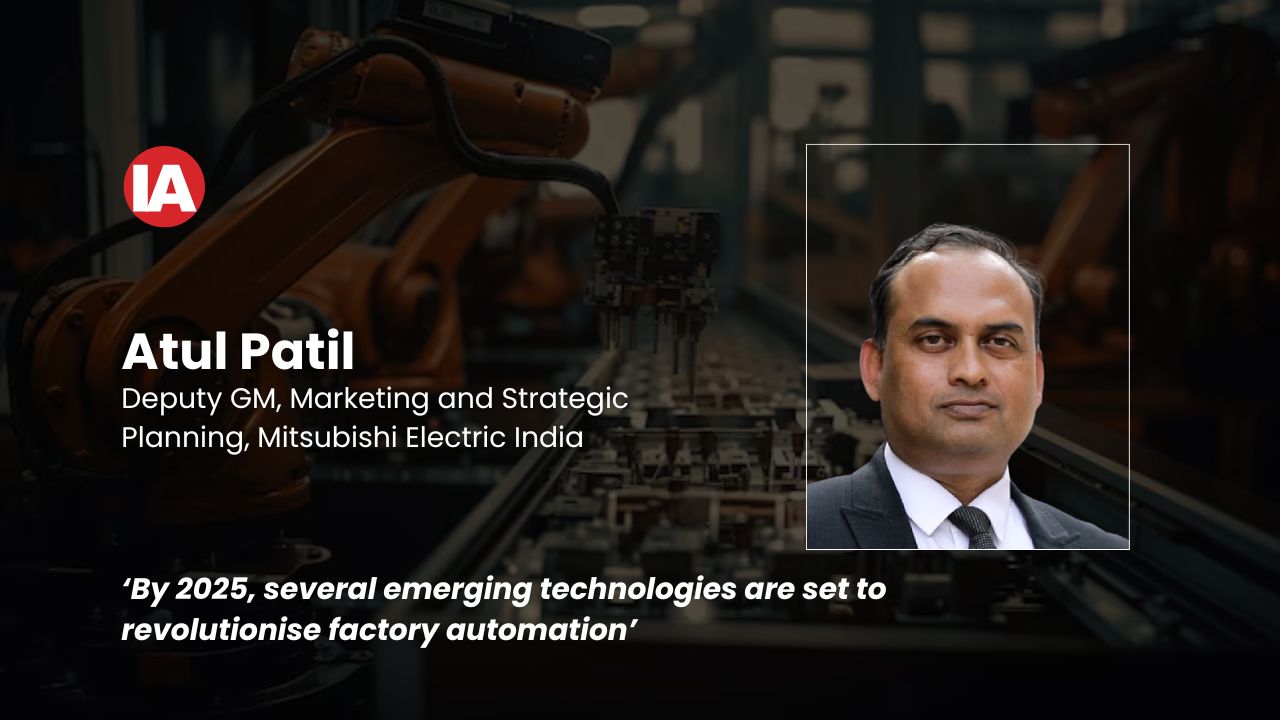
“By 2025, several emerging technologies are set to revolutionise factory automation. 5G connectivity will enable ultra-reliable, low-latency communication, facilitating real-time data transfer and seamless connectivity between devices, robots, and machines, which will boost efficiency and support autonomous decision-making. AI and machine learning will drive smarter factory operations by predicting and addressing operational issues, optimising workflows, and enabling autonomous systems like robots and drones to perform complex tasks with greater precision,” says Atul Patil, Deputy GM, Marketing and Strategic Planning, Mitsubishi Electric India, and also goes on to add other leading trends like cobots, AMRs, additive manufacturing and digital twins as game changers. “These advancements will collectively transform factories into smarter, more efficient, and agile production environments,” he adds.
“Yes, several emerging technologies in automation are set to revolutionise factories, making them more efficient, flexible, and adaptive,” concurs Rajesh Nath, Managing Director – India Operations, VDMA – India (German Engineering Federation). One of the key game-changers, in his opinion, will be AI-powered automation. AI combined with ML will allow factories to predict failures, optimise production schedules, and ensure quality control with minimal human intervention. “Another significant advancement is the rise of 5G connectivity, which will enable real-time data transmission between machines, robots, and control systems with virtually no latency. This will be essential for edge computing, where data is processed locally, improving speed and reliability in critical operations,” he opines.
According to Vijay Mathew, Director, Industrial Technologies, Frost & Sullivan, the landscape of factory automation is poised for some transformative shifts in 2025, driven largely by advancements in technology that not only enhance production efficiency but fundamentally alter how we conceive of and manage factory operations. “Given the trends we're observing, there are three particular technologies that I believe will be game-changers. First, adaptive robotics stand out to me as a critical development. The ability for robots to learn and adapt in real-time to changing manufacturing tasks without human intervention could revolutionise production flexibility and efficiency. Second, the integration of digital twins within the industrial metaverse is another trend I'm particularly excited about. This technology offers a level of simulation and forecasting that can dramatically reduce downtime and predict future maintenance needs. Lastly, the role of edge computing in factory settings is becoming increasingly important. Processing data on-site and in real-time minimises delays and enhances decision-making capabilities,” he says.
It is the convergence of emerging technologies that is leading the way to a new era in manufacturing, integrating intelligent systems with advanced automation and total connectivity. So, with the growth of Industrial IoT (IIoT), how do you foresee trends like connected workspaces, AI/ML, robotics and the industrial metaverse influencing factory operations?
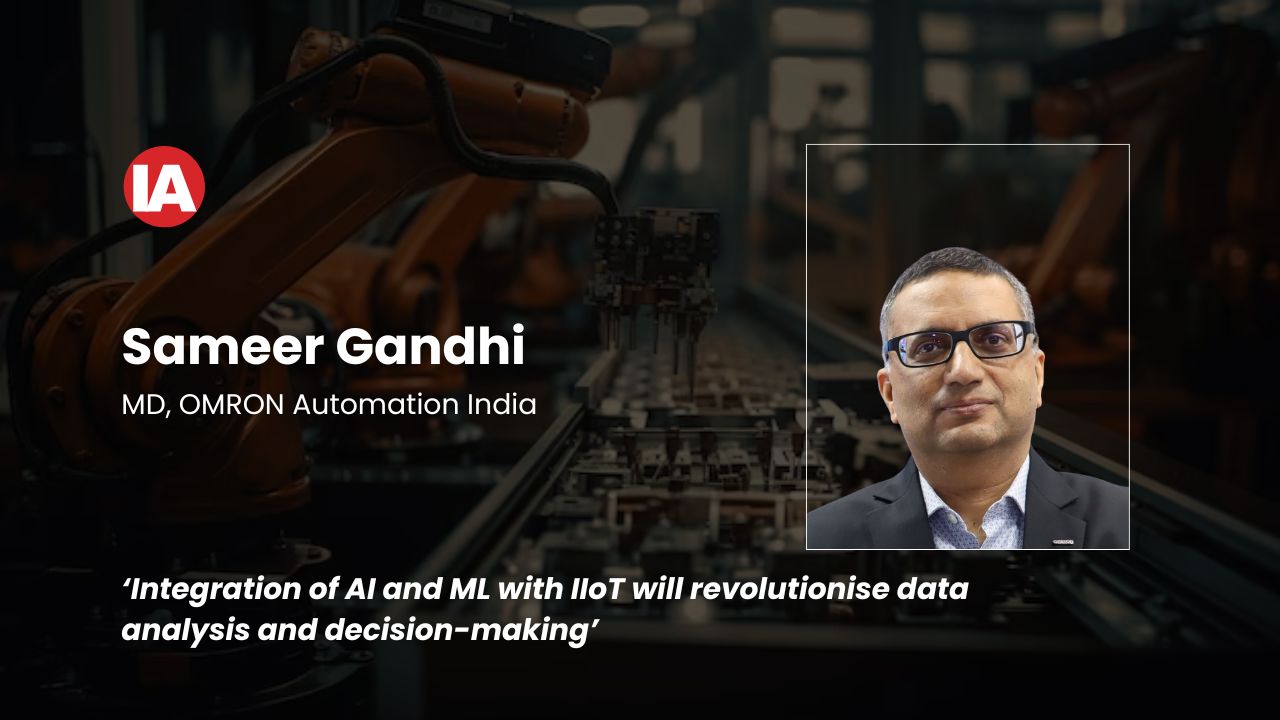
“As we look ahead into 2025 and beyond, the growth of IIoT will significantly make progress in transforming factory operations. Key trends include connected workspaces that enable seamless connectivity between machines, devices, and workers, leading to more efficient workflows and real-time monitoring. The integration of AI and machine learning with IIoT will revolutionise data analysis and decision-making, predicting machine failures, optimising production schedules, and enhancing supply chain visibility. This will result in more autonomous and efficient factory operations, boosting productivity,” says Sameer Gandhi, MD, OMRON Automation India. “These trends will foster a more agile, responsive, and sustainable manufacturing environment, significantly influencing factory operations in India by 2025,” he asserts.
To Saju SR, Sr. Vice President, Smart Power Division, Electrification Business, ABB India, AI is revolutionising automation by driving new levels of autonomy, expanding applications across diverse industries, and making advanced technologies more accessible to a wider range of users. “For example, technologies like Visual Simultaneous Localisation and Mapping (Visual SLAM) empower systems to autonomously map and adapt to their surroundings, reducing the need for extensive infrastructure and enabling more flexible operations. AI-powered automation is also transforming human-machine collaboration. Intuitive AI interfaces, including generative AI, allow users to interact with systems through natural language, making it easier for individuals without technical expertise to engage with these technologies. This lowers entry barriers, allowing a broader workforce to leverage automation, especially beneficial for small and medium-sized enterprises addressing labour shortages,” he says.
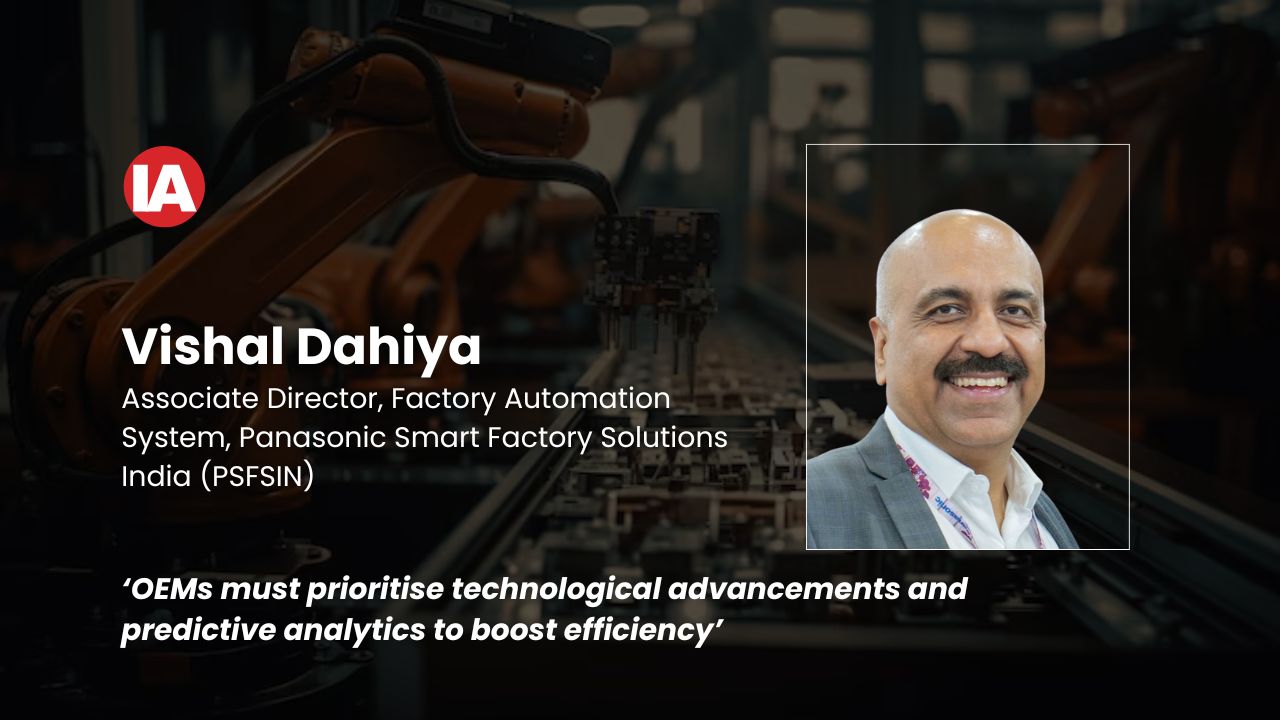
“We anticipate that the industry will move towards adopting Industry 5.0 conceptualised as ‘Society 5.0’ and Panasonic is deeply aligned with this transformative vision,” says Vishal Dahiya, Associate Director, Factory Automation System, Panasonic Smart Factory Solutions India (PSFSIN). Devised by the Japanese government, Society 5.0 envisions a technology-driven human-centred ‘Super Smart Society’, addressing social challenges by integrating IoT, AI, ML, robotics, and big data into every aspect of life and industry. “Robotics, including collaborative robots (cobots), are augmenting human capabilities, enhancing safety, and ensuring operational consistency. Connected workspaces enable seamless integration of machines, sensors, and human operators, encouraging real-time communication and decision-making for improved productivity and efficiency. The industrial metaverse is an intriguing frontier, offering immersive simulations and virtual environments for factory planning, training, and monitoring. Combining real-time data with digital twins enables factories to predict outcomes, test scenarios, and implement changes with minimal disruption,” he explains.
Edge computing, which collects data directly from sensors and devices and enables real-time monitoring and control of machines and equipment on the shop floor, is one of the crucial pieces of technology. How are edge computing and real-time analytics expected to shape factory processes in the near future?
According to Atul Patil, edge computing will play a pivotal role in enhancing factory operations by reducing latency and enabling real-time decision-making on the factory floor. By processing data closer to the source of collection, it ensures faster responses, which is crucial for tasks such as robotic control, quality checks, and process optimisation. This local data processing allows factories to leverage real-time analytics to identify inefficiencies, predict potential failures, and optimise resource usage, ultimately improving production uptime and operational efficiency. “Edge computing enhances data sovereignty and security by allowing sensitive information to be processed locally, reducing the need to transmit it to centralised cloud servers. This not only strengthens data security but also helps factories comply with regional data privacy regulations, safeguarding both operational and regulatory interests,” he elaborates.
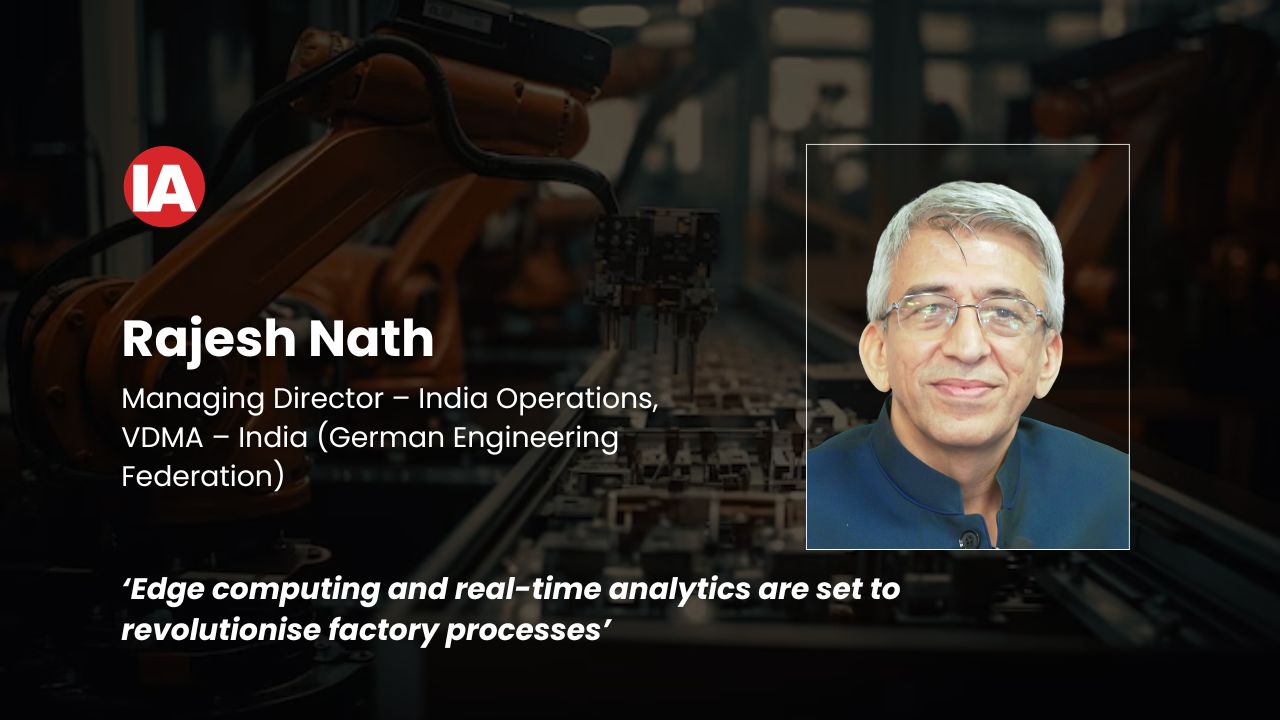
“Edge computing and real-time analytics are set to revolutionise factory processes by enhancing efficiency, reducing downtime, and improving product quality,” says Rajesh Nath, who believes by processing data locally at the edge of the network, factories can minimise latency, enabling faster decision-making and immediate responses to operational issues. Real-time analytics, on the other hand, provide actionable insights by continuously monitoring equipment health and production performance, allowing for predictive maintenance and early detection of potential failures. “Edge computing enables real-time quality control, where sensor data and image recognition can detect defects as products are being made, ensuring higher standards. In supply chain management, both technologies optimise inventory and production schedules by enabling dynamic adjustments based on real-time data, leading to reduced waste and better alignment with demand. As a result, factories can become more agile, adaptable, and data-driven, fostering a smarter, more sustainable manufacturing environment,” he opines.
For Vijay Mathew, edge computing and real-time analytics are set to significantly shape the future of factory processes, and their impact cannot be overstated. “From my perspective, these technologies are pivotal for enhancing operational efficiency and agility within manufacturing settings,” he says, and lists out the reasons:
- Firstly, edge computing addresses one of the fundamental challenges in factory automation – latency in data processing. By processing data directly at the source, we reduce the dependency on centralised data centres, which in turn minimises delays and enhances the responsiveness of automated systems.
- Furthermore, real-time analytics play a complementary role by enabling immediate insights into the production process. This capability allows factory managers and decision-makers to monitor operations instantaneously and make adjustments on the fly.
- Combined, these technologies foster a more resilient manufacturing environment. They empower factories to not only react swiftly to issues but also to anticipate and mitigate potential disruptions before they occur.
All these emerging technologies performing wonders in manufacturing in Greenfield projects however face one significant hurdle when it comes to legacy plants. What challenges do factories face in integrating legacy systems with new automation technologies?
“Integrating legacy systems with new automation technologies presents several challenges, including compatibility issues, data silos, high costs, and operational disruptions. Factories need to break down data silos to ensure smooth data flow and invest in training to address skill gaps. The transition can be expensive and may lead to downtime, requiring careful planning and robust cybersecurity measures to avoid vulnerabilities,” says Sameer Gandhi, who maintains addressing these challenges requires a collaboration with a good automation solution provider which drives the transformation from a long term and strategic perspective, and not a piece-meal approach. “Also, factories must prioritise training and development to equip the workforce with the necessary skills, while also ensuring minimal disruption to ongoing operations during the integration process,” he suggests.
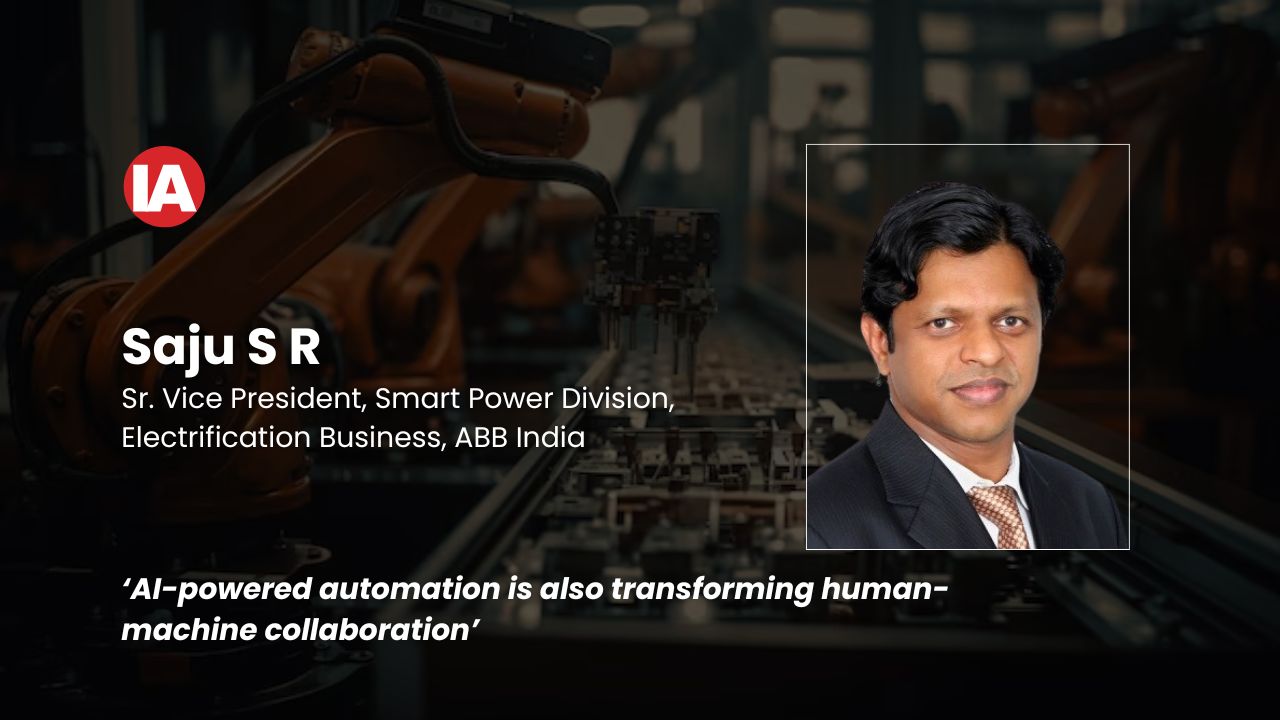
When it comes to legacy systems Saju SR believes that new automation technologies pose several challenges to factories. One of the primary issues is the existence of outdated IT infrastructure that is incompatible with modern software. This incompatibility hinders the organisation's ability to effectively analyse production, sensor, and other critical data, thereby limiting its operational efficiency and productivity. Another significant challenge is the high cost and complexity of retrofitting. Furthermore, as more shop floor machines are connected to the internet to facilitate automation, cybersecurity becomes a major concern. “Lastly, many factories have machines that have been in operation for decades, which often have limited or no sensor and internet connectivity. This makes it difficult, if not impossible, to integrate them with IIoT devices, further complicating the transition to automated systems,” he explains.
“The major challenge here is legacy system compatibility; outdated systems struggle to communicate effectively with new technologies due to differing communication protocols and data formats. Ensuring interoperability between legacy systems and modern technologies remains a challenge. This leads to difficulties in data integration and standardisation with newer processes. Additionally, there are cybersecurity risks accompanying this integration, as legacy systems may lack updated security protocols, exposing them to vulnerabilities,” says Vishal Dahiya. Also, the financial aspect cannot be overlooked; integrating these systems can be both costly and resource-intensive. To address these challenges, Panasonic Smart Factory Solution India (PSFSIN) developed a plug-and-play Industrial IoT platform known as Miraie Profactory. “This is a one-stop solution for deployment, service and business intelligence needs. It empowers manufacturers to design paperless digitised shop floors, drive machine effectiveness, and maximise plant operations, i.e., monitor production efficiencies right from procurement to finished assembly,” he adds.
Of the critical issues now facing the world, and not just industry, is sustainability. How are sustainability goals influencing automation strategies in manufacturing?
Sustainability is driving automation strategies in several ways, says Atul Patil, as he highlights some of these:
- Energy Efficiency: AI and machine learning algorithms will optimise energy consumption by adjusting factory operations based on real-time demand and usage.
- Waste Reduction: Automation will help minimise material waste by optimising production processes, improving quality control, and enabling more precise manufacturing.
- Digital Twins for Sustainable Planning: Tools like MELSOFT Gemini 3D Simulation Software from Mitsubishi allow manufacturers to model and test sustainable production processes before implementation, minimising waste and inefficiencies.
- Smart Factories and Industry 4.0: Smart sensors and IoT devices help monitor and control energy use, water consumption, and emissions, driving sustainable operations. Mitsubishi Electric’s e-F@ctory solutions promote lean and green manufacturing by integrating all production layers for optimised sustainability.
“Sustainability goals are no longer optional but a critical part of industrial strategies. By leveraging cutting-edge automation solutions, manufacturers can achieve greater operational efficiency while meeting their environmental responsibilities,” says Atul Patil.
“Automation is playing a key role in achieving sustainability goals by enabling energy efficiency through optimised production processes. Smart automation systems can adjust energy usage in real time, ensuring that machines operate only when needed, and minimising waste,” says Rajesh Nath, and adds that automated systems can monitor and control production precisely, reducing material waste, scrap, and defects. In addition, supply chain optimisation driven by automation helps reduce the carbon footprint. By improving inventory management, logistics, and production schedules, automation minimises excess stock, transportation emissions, and overproduction. Furthermore, circular manufacturing is becoming more feasible with automation, as robots and AI systems help disassemble products for recycling and repurposing materials, contributing to a more sustainable product lifecycle. “Overall, sustainability goals are pushing manufacturers to adopt automation that not only enhances productivity but also drives responsible resource use, lower emissions, and supports greener manufacturing practices,” he explains.
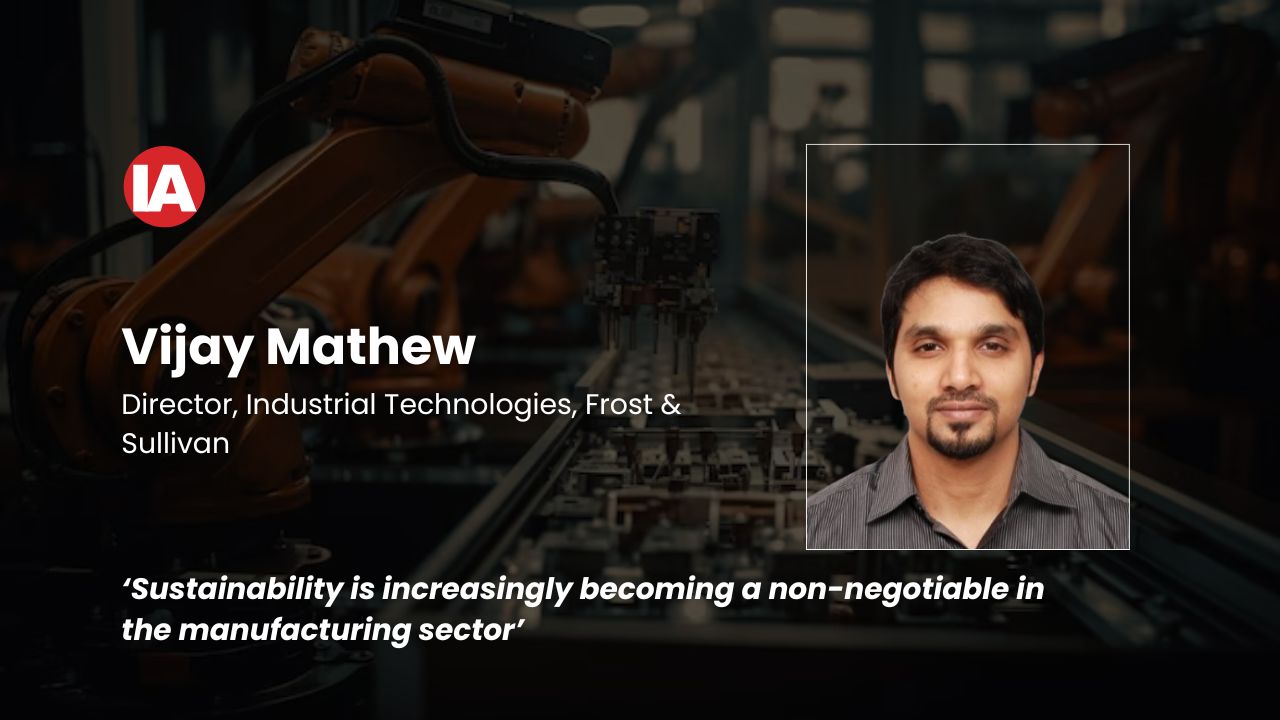
Vijay Mathew believes sustainability is increasingly becoming a non-negotiable in the manufacturing sector, profoundly influencing automation strategies, and it is not just about compliance or public relations; it’s about fundamentally enhancing operational efficiency and securing long-term viability. “For instance, advanced predictive maintenance systems can dramatically reduce energy consumption and minimise waste by ensuring equipment operates at peak efficiency. This not only aligns with sustainability goals but also reduces operational costs, which is a significant incentive for manufacturers,” he says. It’s not merely about adopting new tools; it’s about rethinking processes to make them more sustainable, which in turn enhances the brand reputation and aligns with global environmental objectives.
To sum up, it would be interesting to know what are the critical factors for companies to consider when planning their automation investments in 2025.
“Companies planning their automation investments in India for 2025 should consider several critical factors,” says Sameer Gandhi, to whom evaluating the potential return on investment (RoI) is essential, focusing on technologies that offer significant cost savings, productivity improvements, and long-term benefits. It is also crucial to ensure scalability so that the automation solutions can accommodate future growth, handle increased production volumes, and integrate with other systems as the business expands. “Finally, selecting the right automation technology partners with a proven track record, strong support services, and the ability to provide customised solutions is critical. By considering these factors, companies can make informed decisions that maximise the benefits of their automation investments,” he adds.
“OEMs must prioritise technological advancements like AI, IoT, and predictive analytics to boost efficiency. Moreover, addressing integration challenges, cybersecurity risks, and workforce implications, such as retraining, ensures a smooth transition. Additionally, aligning automation with sustainability goals enhances reputation and compliance,” opines Vishal Dahiya, who says the Panasonic Smart Factory Solution (PSFSIN) enables customers to advance from traditional manufacturing and industrial practices to the latest Smart Manufacturing technologies. “We use new-age technologies such as machine-to-machine communication and the Internet of Things for increased automation, improved communication and self-monitoring that helps analyse issues without the need of human intervention. These solutions empower manufacturers to achieve higher efficiency, improved quality, and streamlined operations through data-driven insights and automation,” he concludes.
Note: The responses of various experts featured in this story are their personal views and not necessarily of the companies or organisations they represent. The full interviews are hosted online at https://www.iedcommunications.com/interviews)